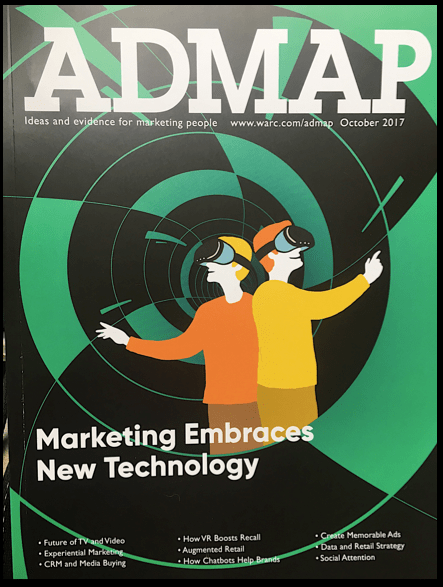VR provides a new perspective
You might be sitting at your desk, in a café or on a crowded train at the moment however your mobile (placed in a VR headset) can teleport you to a luxury hotel room, five-star restaurant or Brighton beach. Marketers have been experimenting with VR as an advertising channel for a few years however we can now prove VR’s meaningful (and immediate) value as a market research tool.
We launched the industry’s first VR research panel earlier this year with respondents reporting a 17% increase in survey enjoyment (compared to online surveys) which proved the benefits of coupling VR with market research. Whilst one shows us the world, the other seeks to understand it. It also solves the genuine problem of contemporary market research methods which ask people to consciously recall events or imagine scenarios in person, over the phone or online. VR transforms this entirely.
When retail goes virtual
The retail sector in particular can benefit from new market research tools. Asking people to accurately recall or predict how they’d behave in a real shop is tricky. Testing point of sale in a crowded retail environment is very difficult; mocking up the physical retail space is too costly, time-consuming and problematic to test at a large scale. Conducting large-scale market research which genuinely replicates real world experiences, is even harder.
With VR, anything from NPD, pack design, product positioning, messaging and branding to in-store layout can be researched en masse and on budget. 3D CGI VR room-scale environments, like our virtual supermarket, simulate real shopping behaviour in the context of real world behaviour. This does however involve recruiting respondents to a viewing facility, so we also wanted to create a genuinely scalable option.
We partnered with Populus to create the first VR panel – powered by smartphones, Google Cardboard headsets and 360 video – to do just that. It was first put to the test when O2 approached Populus with an in-store point of sale challenge and we’ve subsequently worked on a range of briefs, from FMCG to Banking, to answer a range of marketing questions.
There were a number of challenges to overcome first
Firstly, respondents had to be recruited and provided with low cost Google Cardboard headsets. They had to pass standard research survey screening, and they needed to have phones compatible with Google Cardboard. As two-thirds had never experienced VR before, they had to be given clear and simple instructions on how to use it.
Creating the virtual store itself came with its own unique set of challenges. The 360 camera position had to be carefully chosen due to the fixed 360 perspective. In-store permissions had to be arranged (including legal, security, health and safety considerations) and a consistent environment, such as in-store music, had to be used throughout. It was also important, on the first project, to benchmark the study alongside traditional 2D in-survey mock-ups.
In post-production, we altered the physical store fixtures with photorealistic CGI to create different 360 video versions across different cells and have continued to refine our workflow so it’s now a quick and seamless process.
So, what have we learnt?
According to Populus research, there was a 17% increase in survey enjoyment and engagement among respondents in comparison to the benchmark online survey. Of those who responded, 88% would be interested in doing a VR survey again in future. That’s good news, as we’ve started to build a VR panel which can be utilised on multiple studies, with respondents primed and ready for the next one.
Two-thirds (75%) said it was more fun to do a survey with VR and 68% found Google Cardboard easy to use. We also countered the “older people will find it difficult” question by proving similar engagement levels across 16-24s and 55+. Importantly, there are major learnings for brands. They’ve gained insight into the optimum messaging and retail set-up to increase cut-through and understanding of new products – which leads to more sales.
VR surveys won’t be appropriate for all topics or all audiences, but the evidence is that the approach ‘brings to life’ adverts, displays, products and in-store environments in a richer way than a traditional survey with static images. 360 video experiences powered by respondent mobiles and £2 VR headsets enable qual insight to be scaled to a quant sample like never before.


Recent Comments